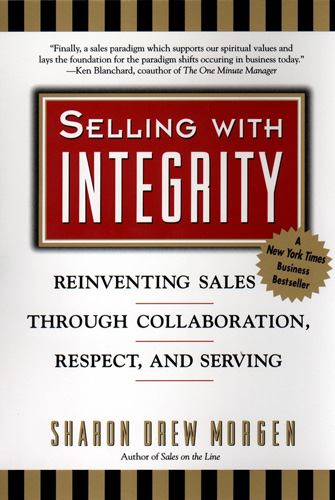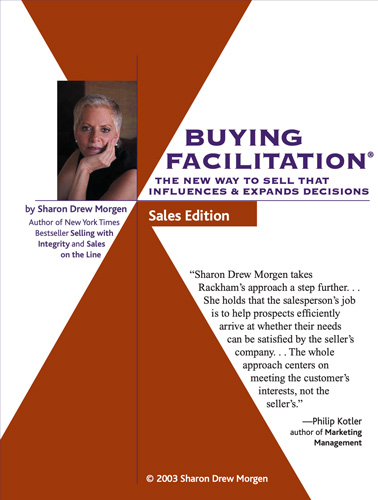 Have you realized that people don’t always hear each other accurately? The problem is not that we don’t hear words correctly; the problem is in the interpretation. Our brain gets in the way.
Have you realized that people don’t always hear each other accurately? The problem is not that we don’t hear words correctly; the problem is in the interpretation. Our brain gets in the way.
During the listening process, our brains arbitrarily filter out, or reconfigure incoming sound vibrations (or Words, considered ‘puffs of air’ by neuroscientists), then turn what’s left into electrochemical signals that get dispatched to existing circuits for translation where further deletions occur. This process ensures whatever was said matches something our brains are more familiar with – not necessarily what the speaker intended, and potentially biased by the listener’s history.
Given that all brain activity is electrochemical, our listening process is unconscious, physiological, automatic, mechanical and meaningless. By the time our brain translates incoming content into meaning, we have absolutely no idea if what we think we’ve heard is accurate.
The net-net is: we might ‘hear’ words accurately but our brain doesn’t interpret them as per the intent of the Speaker. With this in mind, I define listening thus:
Listening is an automatic, electrochemical, biological, mechanical, and physiological process during which spoken words, as meaningless puffs of air, eventually get translated into meaning by our existing neural circuitry, leaving us to understand some unknown fraction of what’s been said – and even this is biased by our existing knowledge.
Obviously, what we think was said is most likely not accurate (new research indicates people accurately hear between 10-35% of what a speaker intends), but since our brain doesn’t tell us what it deleted or distorted, we don’t know the difference. So if I say ABC and your brain tells you I’ve said ABL, you not only have no way of knowing that you’ve not understood my intended message, but you’re thoroughly convinced you heard what I ‘said’. Obviously, this interpretation process puts relationships and communication at risk.
This problem is pernicious, causing influencers and clients, parents and children, managers and staff to make false assumptions of what the other has said.
CASE STUDY OF PARTNERSHIP LOST
Here’s a great example of how I lost a business partner due to the way his brain ‘heard’ me. While at a meeting with co-directors of a company to discuss possible partnering, there was some confusion on one of the minor topics:
John: No, SDM, you said X.
SDM: Actually I said Y and that’s quite a bit different.
John: You did NOT SAY Y. I heard you say X!!!
Margaret: I was sitting here, John. She actually did say Y. She said it clearly.
John: You’re BOTH crazy! I KNOW WHAT I HEARD! and he stomped out of the room. [End of partnership.]
Given we naturally respond according to what we think we heard rather than what’s meant, how, then, do we accurately hear what others mean to convey? Maintain relationships? Respond appropriately? I found the topic so interesting that I wrote a book on the gap between what’s said and what’s heard, the different ways our brains filter what’s been said (triggers, assumptions, biases, etc.), and how to supersede our brain to hear accurately.
CASE STUDIES OF PROSPECTS LOST
When we enter conversations with a preset agenda we’re unconsciously telling our brain to ignore whatever doesn’t fit. So when sellers listen only for ‘need’ or when coaches or managers listen for what they can fix, they miss important clues. A coaching client of mine had this conversation:
Seller: Hi. I’m Paul, from XXX. This is a sales call. I’m selling insurance. Is this a good time to speak?
Buyer: No. it’s a horrible time. It’s end of year and I’m swamped. Call back next week and I’ll have time.
Seller:ok.iwanttotellyouaboutourspecialsthatmightsuityourbusinessandmakeyou
morerevenue.
And the prospect hung up on him. Because the Seller was initially respectful of the prospect’s time, they were willing to speak but lost interest when the Seller tried to pitch. As I was training the Seller on Buying Facilitation® that advocates facilitating decision making on the Buy Side before pitching, I was quite surprised:
SDM: What happened? He told you he’d speak next week. Why did you go right into trying to sell something? You know to first facilitate the Buy Side before attempting to sell anything. And why did you speak so quickly?
Paul: He had enough time to answer the phone, so I figured I’d try to snag him into being interested. I spoke fast cuz I was trying to respect his time.
Obviously not a way to sell anything.
WAYS TO INCREASE ACCURACY
We restrict possibilities when we enter calls with an agenda. We:
- Misdefine what we hear so messages mean what we want them to mean;
- Never achieve a true collaboration;
- Speak and act as if something is ‘true’ when it isn’t and don’t recognize other choices or possibilities;
- Limit our reactions and never achieve the full potential.
Here is a short list of ways to alleviate this problem (and take a look at What? for more situations and ideas):
- Enter each call as a mystery. Who is this person you’re calling? What’s preventing her from achieving excellence?
- Enter each call with a willingness to serve.
- Don’t respond immediately after someone has spoken. Wait a few seconds to take in the full dialogue and its meaning.
- Don’t go into a pitch, or make an assumption that a person has a need until they have determined they do – and that won’t be until much later in the conversation.
- Don’t enter a call with your own agenda. That leaves out the other person.
Enter each call to form a collaboration in which together you can hear each other and become creative. By restricting what you’re listening for and ignoring any problems the Listener has translating what you’ve said, you’re limiting what’s possible. If you want to learn how to overcome the brain’s translation issues, read my book WHAT? Or call me. I have a one-day training program that teaches how to hear others without bias.
____________
Sharon-Drew Morgen is a breakthrough innovator and original thinker, having developed new paradigms in sales (inventor Buying Facilitation®, listening/communication (What? Did you really say what I think I heard?), change management (The How of Change™), coaching, and leadership. She is the author of several books, including her new book HOW? Generating new neural circuits for learning, behavior change and decision making, the NYTimes Business Bestseller Selling with Integrity and Dirty Little Secrets: why buyers can’t buy and sellers can’t sell). Sharon-Drew coaches and consults with companies seeking out of the box remedies for congruent, servant-leader-based change in leadership, healthcare, and sales. Her award-winning blog carries original articles with new thinking, weekly. www.sharon-drew.com, https://sharondrew1.substack.com/, and https://medium.com/@sharondrew_9898. She can be reached at sharondrew@sharondrewmorgen.com.







26 thoughts on “Listening Biases Restrict Communication, by Sharon-Drew Morgen”
Pingback: We Don’t Know How to Hear Each Other: how biases distort our conversations | Sharon-Drew Morgen
Pingback: Sharon-Drew Morgen » Some Truths about Systems, and How they Affect Change
Pingback: Sharon-Drew Morgen » The Business of Kindness
Pingback: Sharon-Drew Morgen » Checklist for Influencers: questions for sellers, coaches, leaders, change agents
Pingback: Sharon-Drew Morgen » Sellers Ask the Wrong Questions
Pingback: We Don't Know How to Hear Each Other: how biases distort our conversations | | Best Practice In Sales and Marketing
Pingback: Sharon-Drew Morgen » Do We Forget Our Values With ‘Different’ People?
Pingback: What You Need to Know about Systems and How they Affect Change | What? Did You Really Say What I Think I Heard?
Pingback: Sharon-Drew Morgen » When, Why, What, and How to Pitch Your Story: a guide for parents, leaders, fund raisers, and sellers
Pingback: When, Why, What, and How to Pitch Your Story: a guide for parents, leaders, fund raisers, and sellers | What? Did You Really Say What I Think I Heard?
Pingback: Sharon-Drew Morgen » Speaker or Listener: Who’s Responsible For Misunderstandings?
Pingback: When, Why, What, and How to Pitch Your Story: a guide for parents, leaders, fund raisers, and sellers | | Best Practice In Sales and Marketing
Pingback: What You Need to Know about Systems and How they Affect Change | | Best Practice In Sales and Marketing
Pingback: Sharon-Drew Morgen » The Noise of Subjectivity: how our personal biases shape and restrict our worlds
Pingback: Sharon-Drew Morgen » Why We Get Objections
Pingback: Sharon-Drew Morgen » Feedback: a route to collaboration and excellence
Pingback: Sharon-Drew Morgen » What You Need to Know about Systems and How they Affect Change
Pingback: Sharon-Drew Morgen » Make the Phone Your Friend: best practices for sellers, healthcare providers, and consultants
Pingback: Sharon-Drew Morgen » You Can’t Lead If You Can’t Follow
Pingback: The Business of Kindness | What? Did You Really Say What I Think I Heard?
Pingback: Why We Get Objections | What? Did You Really Say What I Think I Heard?
Pingback: You Can't Lead If You Can't Follow | What? Did You Really Say What I Think I Heard?
Pingback: When, Why, What, and How to Pitch Your Story: a guide for parents, leaders, fund raisers, and sellers - Sharon-Drew
Pingback: Buying Enablement: the missing piece in Revenue Enablement - Sharon-Drew
Pingback: Listening Assessment: Do you have listening biases? - Sharon-Drew
Pingback: Listening Assessment: Do you have listening biases? – What? Did You Really Say What I Think I Heard?